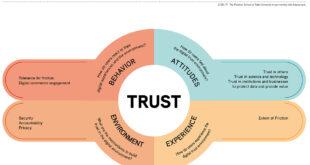Unveiling the Marvels of Primordial Engineering: A Profound Expedition
Table of Contents
Introduction:
The marvels of primordial ancient technology examples stand as enduring testaments to the perspicacity and ingenuity of our forebears. In this comprehensive odyssey, we embark on a temporal sojourn, unraveling the intricate technological zeniths that have sculpted the trajectory of history. From architectural wonders to pioneering contrivances, medical advancements, and ingenious communication apparatus, ancient civilizations have left behind an intellectual bequest that perpetually stimulates and provokes our comprehension of antiquity.
The Remarkable Precision of Primordial Architecture:
Primordial civilizations, epitomized by the Egyptians, Romans, and Greeks, manifested unparalleled precision in their architectural enterprises. The construction of the Egyptian pyramids, a feat transcending 4,000 years, attests to the engineering sagacity of a civilization flourishing millennia ago. The meticulous alignment of the pyramids with celestial entities, notably the North Star, reflects a profound cognizance of astronomy. ancient technology examples
The Roman aqueducts, a marvel of ancient engineering, spotlight the advanced hydraulic perspicuity of that era. These aqueducts, often traversing extensive distances, adeptly conveyed water to urban nuclei, sustaining burgeoning populations. Conversely, the Greeks etched an indelible impression with their temples, showcasing a keen cognizance of geometry and mathematical principles in their construction.
Revolutionary Apparatus and Contrivances:
Despite our propensity to envision ancient tools as rudimentary, diverse ancient cultures demonstrated adroitness in devising innovative contrivances. The Roman waterwheel, for instance, played an indispensable role in milling grain and providing mechanical potency. This early manifestation of hydropower underscores the Romans’ pragmatic approach to harnessing natural resources.
The Chinese seismoscope, conceived by Zhang Heng in the 2nd century, manifested an astonishing degree of technological sophistication. This early earthquake-detection apparatus employed a pendulum mechanism to discern seismic activity, evincing a grasp of physics and mechanics. Another noteworthy relic, the Greek Antikythera mechanism, serves as an ancient analog computer. Discovered in a shipwreck off the Antikythera coast, this intricate device from around 150–100 BCE was utilized for astronomical computations, bearing witness to ancient Greek proficiency in mechanics and gear systems.
Primordial Medical Progress:
ancient technology examples
Delving into the medical practices of ancient civilizations unveils a level of sophistication that may elicit surprise. In ancient Egypt, for instance, surgical implements such as scalpels and forceps were employed for sundry medical interventions. The Edwin Smith Papyrus, dating back to 1600 BCE, proffers insights into surgical techniques, demonstrating a methodical approach to medicine.
The ancient Greeks, under the influence of luminaries like Hippocrates, made substantial contributions to medical knowledge. The Hippocratic Oath, a cornerstone of medical ethics, had its genesis in this era. Greek healers also underscored the significance of meticulous symptom observation and documentation, contributing to the bedrock of contemporary clinical medicine. ancient technology examples
In India, the ancient medical system of Ayurveda traces its origins back millennia. Ayurvedic practitioners embraced herbal remedies, dietary precepts, and surgical methodologies, showcasing a holistic stance towards healthcare. The Susruta Samhita, an ancient Ayurvedic manuscript, delineates surgical techniques with an emphasis on anatomy and patient well-being. ancient technology examples
Celestial and Navigational Instruments:
Primordial civilizations leaned on sophisticated instruments for both celestial navigation and chronometry. The astrolabe, a versatile instrument employed to solve sundry astronomical predicaments, found widespread use in ancient Greece and the Islamic world. Its capability to gauge the altitude of celestial entities facilitated navigation and astronomical observations. ancient technology examples
The utilization of stars for navigation is palpable in ancient seafaring cultures. Polynesians, for instance, traversed the expansive Pacific Ocean using stars, ocean currents, and migratory bird flight patterns. This intricate knowledge empowered them to traverse and settle across the Pacific Islands.
Hydraulic Management Systems:
Primordial civilizations demonstrated remarkable acumen in hydraulic engineering, palpable in their advanced water management systems. The aqueducts of ancient Rome stand as iconic instances of engineering prowess, transporting water from ancient technology examples reservoirs to urban nuclei. The intricate labyrinth of channels and arches showcased not only engineering acuity but also meticulous planning.
In the Indus Valley Civilization, ancient wells and sophisticated drainage systems played pivotal roles in sustaining urban existence. The Great Bath of Mohenjo-daro, an engineering marvel dating back to around 2600 BCE, served as a communal bathing facility and underscored the significance of water management in early urban design.
Ingenious Metallurgical Methodologies:
The mastery of metallurgy in antiquity paved the way for the production of advanced alloys and metallic artifacts. Bronze, an amalgamation of copper and tin, found wide application in various ancient cultures, including Mesopotamia, Egypt, and China. The Bronze Age marked a profound technological leap, leading to the fashioning of tools, weaponry, and artwork of unparalleled quality.
The Hittites, an ancient Anatolian civilization, excelled in iron smelting, catalyzing the Iron Age. The creation of iron implements and weaponry revolutionized both warfare and daily existence, attesting to the transformative potency of metallurgical advancements.
Innovative Script and Communication Systems:
The evolution of script systems represents a seminal triumph in the annals of human communication. Cuneiform, the earliest recorded form of writing, originated in ancient Mesopotamia around 3500 BCE. Scribes employed wedge-shaped impressions on clay tablets, documenting everything from administrative transactions to literature.
Hieroglyphics, the script system of ancient Egypt, comprised pictorial symbols denoting objects, sounds, or concepts. The Rosetta Stone, a pivotal artifact in deciphering hieroglyphics, enabled scholars to unravel the mysteries of ancient Egyptian literature and historical records.
What were the pivotal architectural triumphs of ancient civilizations?
Ancient civilizations, such as the Egyptians, Romans, and Greeks, presented architectural wonders like the Egyptian pyramids, Roman aqueducts, and Greek temples. These structures epitomized exactitude in construction, sophisticated engineering methodologies, and a profound grasp of mathematical and astronomical principles.
What avant-garde implements and contrivances were employed by ancient cultures?
Ancient cultures deployed avant-garde implements such as the Roman waterwheel for grain milling, the Chinese seismoscope for seismic event detection, and the Greek Antikythera mechanism as an analog computational device. These innovations underscored an unforeseen echelon of technological refinement across diverse domains.
How sophisticated were medical methodologies in ancient civilizations?
Medical methodologies in ancient civilizations, encompassing Egypt, Greece, and India, evinced sophistication. Surgical apparatus, herbal remedies, and methodical healthcare approaches were pervasive. Contributions like the Hippocratic Oath and Ayurveda showcased the bedrock of contemporary medical ethics and holistic health paradigms.
What instruments were employed for astrological and navigational exigencies in antiquity?
Ancient civilizations employed instruments like the astrolabe for celestial navigation and chronometry. Furthermore, Polynesian navigators relied on their celestial, oceanic, and avian cognition for maritime navigation, accentuating the pivotal role of celestial navigation in ancient exploration.
How did ancient civilizations regulate water reservoirs?
Water regulation systems in ancient civilizations demonstrated sophistication, exemplified by the Roman aqueducts and the Indus Valley Civilization’s meticulously devised drainage networks. These systems not only fulfilled fundamental needs but also showcased scrupulous planning and engineering adeptness.
What were the strides in ancient metallurgy?
Ancient metallurgy witnessed momentous strides, particularly with the formulation of alloys like bronze. The Bronze Age marked a quantum leap in technological capabilities, while the Hittites’ expertise in iron smelting precipitated the Iron Age, catalyzing the transformation of tool and weaponry fabrication.
How did ancient civilizations communicate through inscription?
Ancient civilizations communicated through diverse inscription systems. Cuneiform, hieroglyphics, and the Phoenician alphabet constituted noteworthy exemplars. These inscription systems played a pivotal role in documenting administrative transactions, literature, and historical chronicles, fostering the dissemination of knowledge.
What is the import of ancient technology in contemporary epochs?
Ancient technology laid the groundwork for contemporary advancements. Scrutinizing these accomplishments provides insights into the antecedents of modern technology, nurturing a profound reverence for human ingenuity. The erudition gleaned from ancient civilizations perennially inspires and molds our comprehension of progress.
How did ancient civilizations contribute to navigation and exploration?
Ancient civilizations contributed to navigation and exploration through celestial navigation tools like the astrolabe and their discernment of celestial bodies, currents, and avian migrations. This knowledge empowered civilizations like the Polynesians to navigate vast expanses, augmenting their territories and fostering cultural interchange.
In what manner did ancient technology impact diurnal existence in ancient civilizations?
Ancient technology, encompassing water regulation systems, sophisticated implements, and medical methodologies, profoundly influenced diurnal existence. It ameliorated living conditions, buttressed urbanization, and augmented diverse facets of society, illustrating the pragmatic applications of ancient technological progressions.
 Quaidedu
Quaidedu

